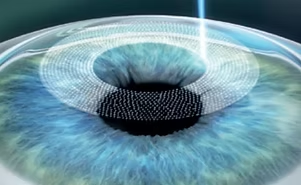Refractive errors
Refractive error is a problem with focusing light accurately on the retina due to the shape of the eye. During the refraction process, the cornea and lens bend light to focus it on the retina. When light hits the retina in the correct place, it produces good vision. In people with refractive errors, the light is not bent correctly and hits the retina in the wrong place. This results in imperfect vision. The most common types of refractive error are near-sightedness, far-sightedness, astigmatism, and presbyopia.
Near-sightedness results in far away objects being blurry, far-sightedness and presbyopia result in close objects being blurry, and astigmatism causes objects to appear stretched out or blurry.
Other symptoms may include double vision, headaches, and eye strain.
Near-sightedness is due to the length of the eyeball being too long, far-sightedness the eyeball too short, astigmatism the cornea being the wrong shape, and presbyopia aging of the lens of the eye such that it cannot change shape sufficiently.
Some refractive errors occur more often among those whose parents are affected.
Refractive errors are corrected with eyeglasses, contact lenses, or surgery. Eyeglasses are the easiest and safest method of correction. Contact lenses can provide a wider field of vision; however they are associated with a risk of infection. Refractive surgery involves permanently changing the shape of the cornea using lasers or implantation of artificial lenses into the eye.

